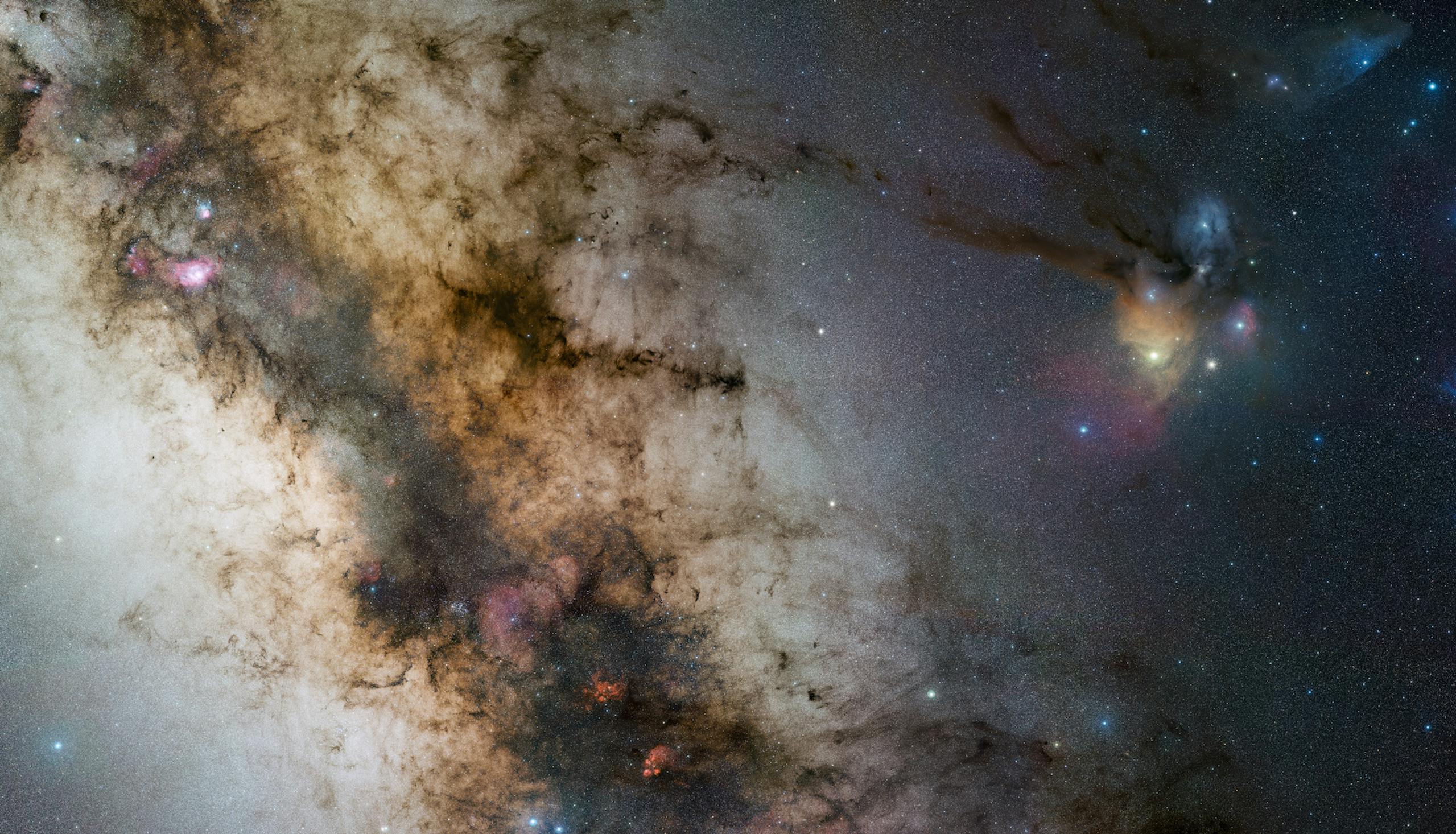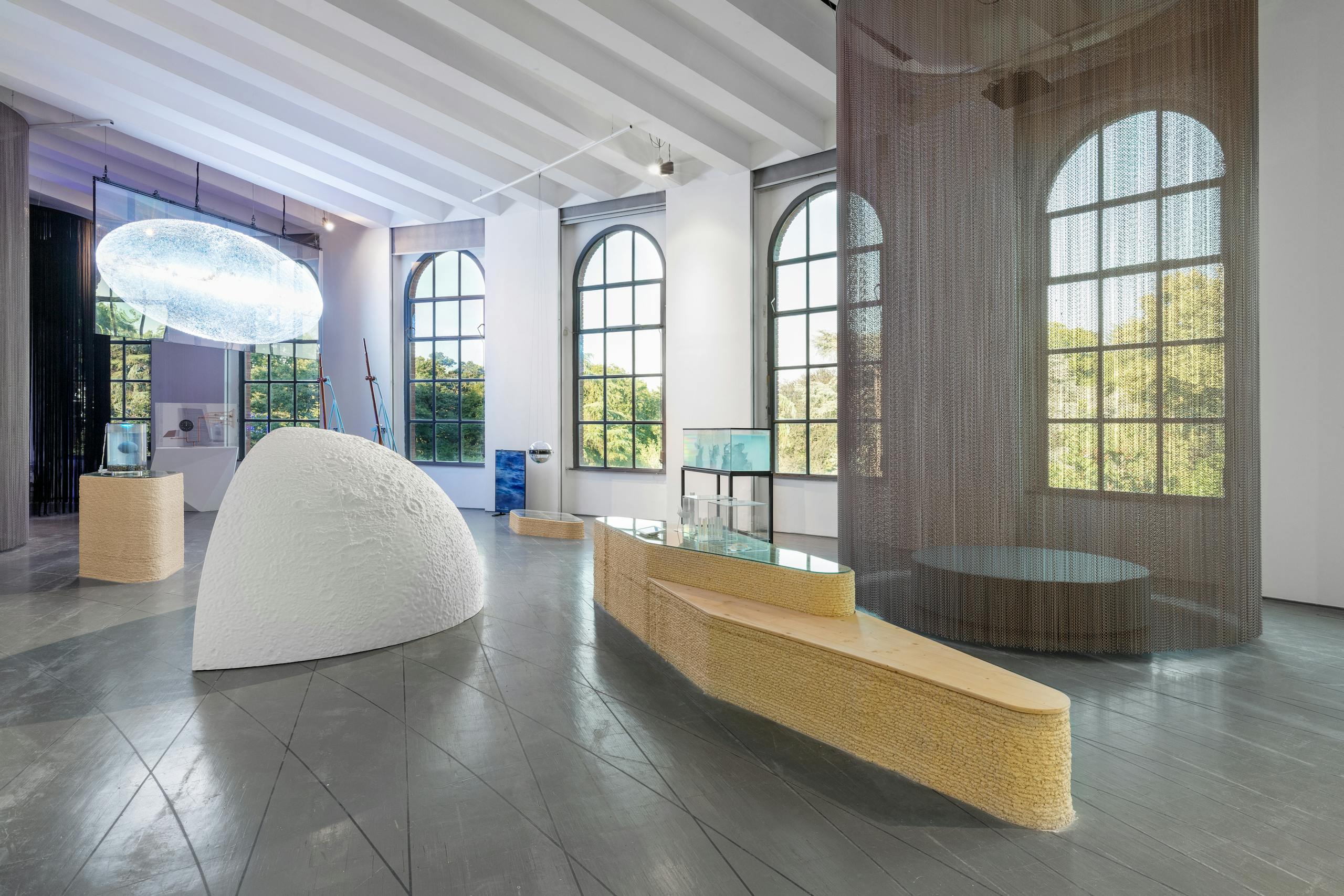
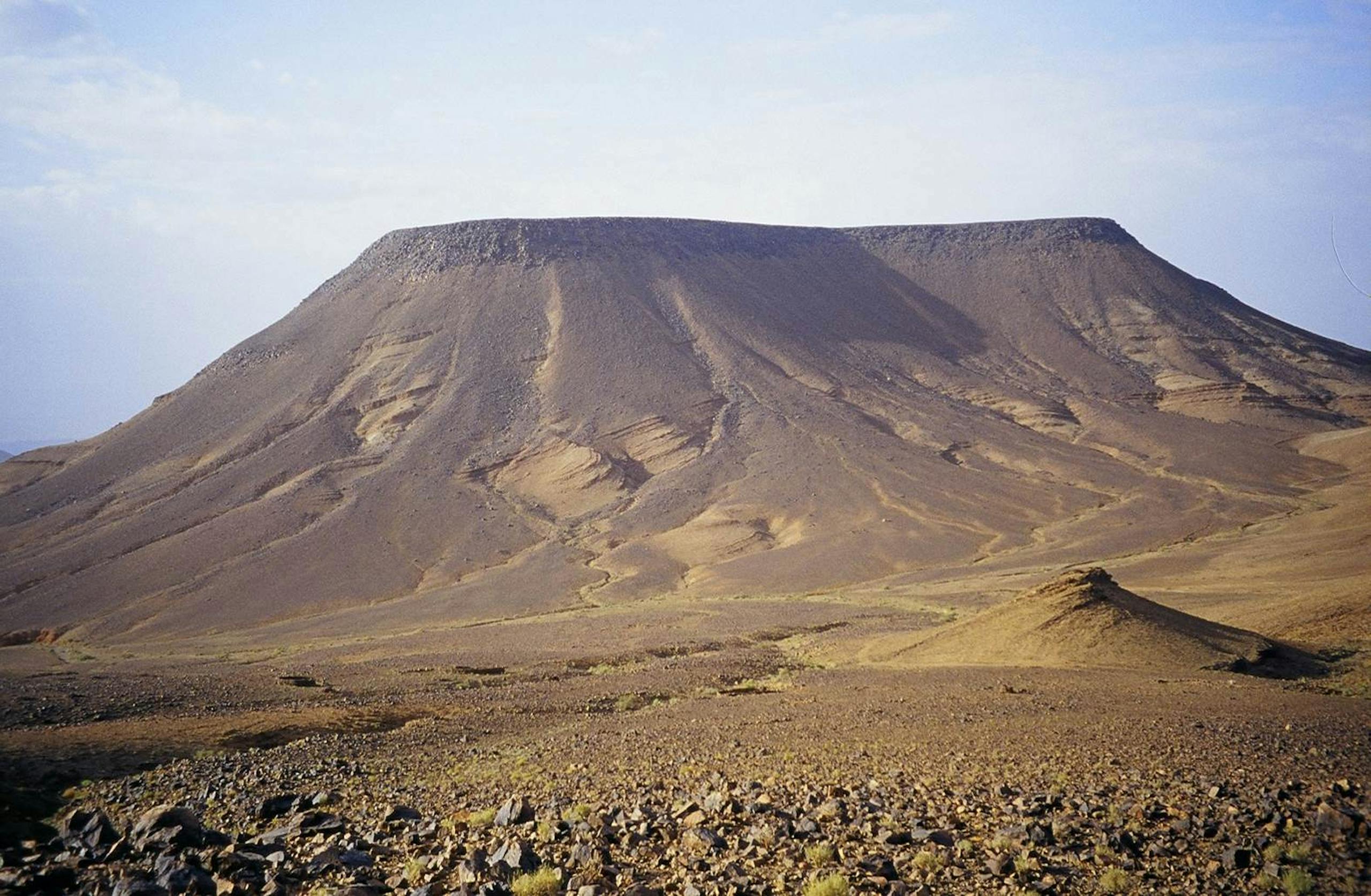
Jbel Tachtafacht, Moroccan Anti-Atlas. Photo M.G.Malusà
Milanese Universities and Mystery. Planet Earth: The Depths of Space and Time
As part of the in-depth study of the themes of Unknown Unknowns. An Introduction to Mysteries, 23rd Triennale International Exhibition, since June 2021 we have involved researchers, PhD students and undergraduates from universities in Milan and the network of foreign communities in a series of meetings and seminars organized and coordinated by Pupak Tahereh Bashirrad, architect and PhD.
Article edited by Guido Pastore, Camilla Lanfranconi et al. from the PhD Course in Chemical, Geological and Environmental Sciences, University of Milano-Bicocca.
For a young scientist it is not easy to deal with the concept of “Unknown Unknowns” without facing scenarios of unexpected complexity. While scientific research can be conceptualized as the exploration of the unknowns, asking a scientist what he doesn't know he doesn't know inevitably leads to complex answers, which generate new boost for the progress of knowledge in the various fields of research. We asked and collected responses among the PhD students in Geological Sciences of the PhD in Chemical, Geological and Environmental Sciences of the University of Milano-Bicocca, realizing that this question can be declined as two key concepts of our discipline: the depths of space and the depths of time.
Geologists study the Planet Earth and try to reconstruct its evolution through the analysis of physical and chemical properties of rocks. The topic of the 23rd International Exposition therefore finds application to Earth Sciences because geologists start from the observation of what is directly observable close to the Earth's surface (known) to infer what is not directly observable as too deep or not preserved in the memory of rocks (unknown).
The depths of the planet
A classic example of what we can deduce but not observe directly, in the geological sciences, is represented by the internal structure and composition of the planet. We all know the radius of the Earth, equal to 6371 km, but we can only make hypotheses on the materials its interior is composed of: the rocks that we can observe directly (the crust and part of the upper mantle) represent only the most external part of the planet. If the Earth was a watermelon, these layers would represent only its most external peel. The greatest depth ever reached by man-made drilling, that is the “superdeep” well in the Kola Peninsula, is just over 12 km deep, therefore it barely scratches the surface of the watermelon. However, portions of deeper rocks sometimes reach the Earth's surface thanks to tectonic and volcanic processes, and can be studied by geologists.
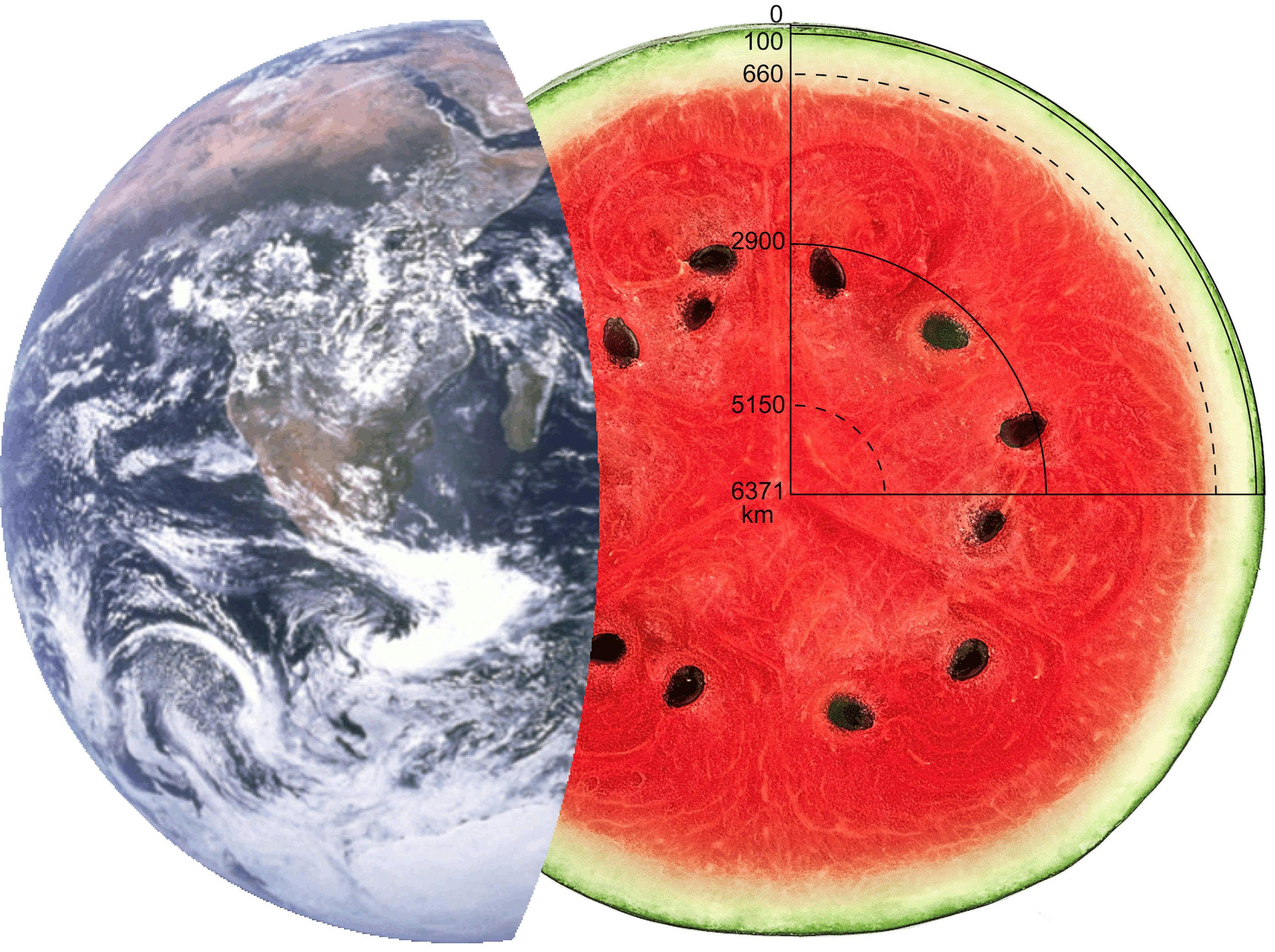
Earth as a watermelon, illustration by M.G.Malusà
The deepest fragments reaching the Earth's surface from its interior are the tiny inclusions in the so-called blue diamonds, such as the famous Hope diamond.

The Hope diamond, with its characteristic intense blue color, is probably of superdeep origin
These inclusions derive from the upper mantle, between 410 and 660 km depth, still within the white skin of the watermelon.
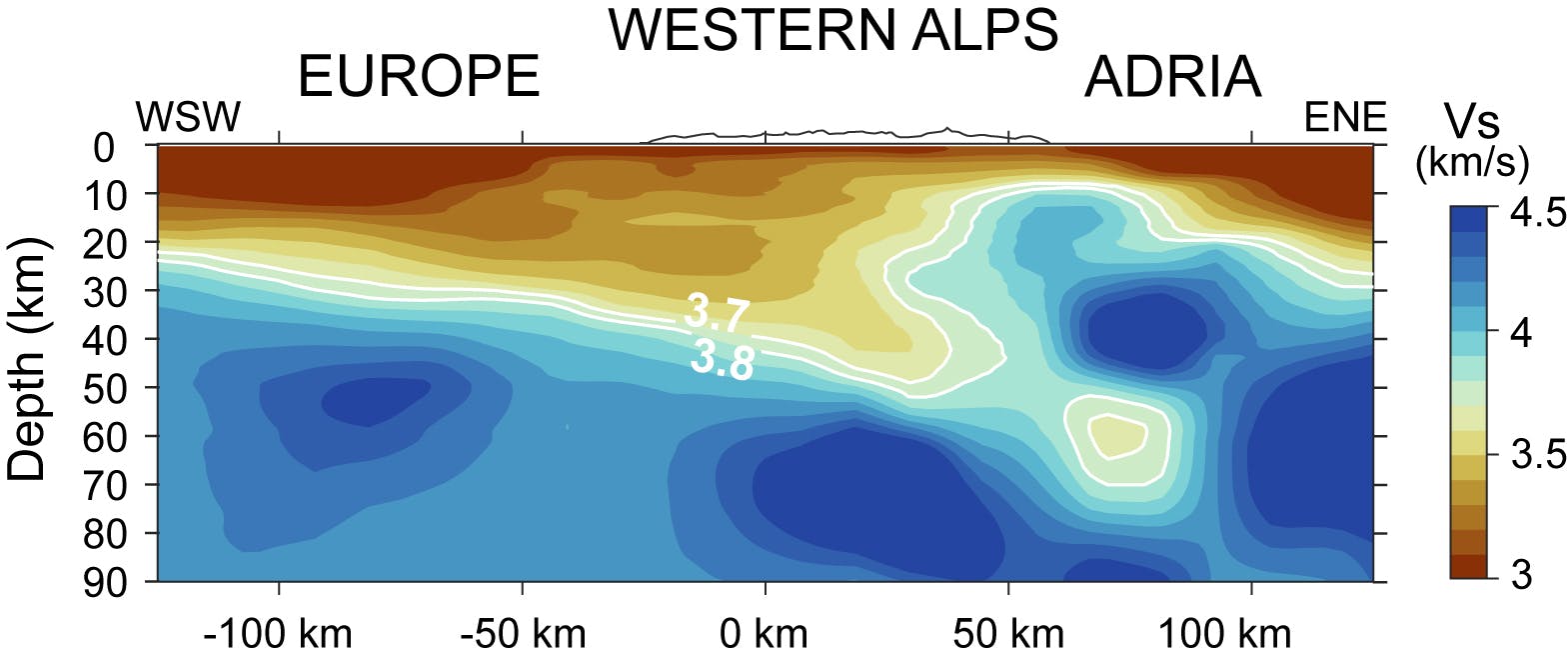
Example of tomography of the interface between crust and mantle under the Western Alps. Illustration from Zhao et al., 2020, Nature Communications open access
What about the rest of the planet?
The deepest portions of the planet, that is the red pulp of the watermelon, can only be investigated indirectly, by analyzing the velocities of propagation of seismic waves generated by earthquakes. Because different rocks are characterized by different velocities of propagation of seismic waves, scientists can perform seismic tomographies, a sort of medical CT scan on a "planetary" scale that shows the distribution of the velocity of the seismic waves within the planet, returning images that geologists can interpret in the light of what they already know.
However, what would be the geologists’ interpretation if they knew what they do not know they do not know? And therefore, what are the implications for understanding the relationships between deep and superficial processes and their interaction with anthropogenic activities? Such an unknown unknown is of primary importance in the field of Earth Sciences.
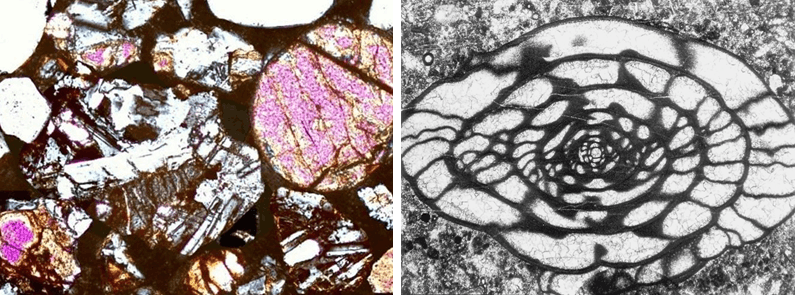
On the left, sediments transported by the Zambezi river observed under the microscope. On the right, a fusilinidae fossil, belonging to an extinct family of forams lived from Carboniferous to Permian period (350-250 Million years ago). Illustration by G. Pastore (photo by G.Pastore and Wikimedia Commons)
The depths of time
The depths of time represent another key concept for the reconstruction of the evolution of the planet we live on. It can be very complex to locate the evolution of a rock and the processes that determined its formation and current characteristics within a proper time frame. For this purpose, geologists consider the time as it is materialized by rocks. There are several tools to refer a rock to a specific period of the Earth’s history, for example their fossil content: when a rock contains specific fossils, we can determine their relative age, and sometimes the climate and environmental conditions of the past as recorded by rocks.
In the light of these relationships between time and matter, geologists can only investigate the time frames preserved in the successions of rocks that have not been destroyed by subsequent erosion. But considering the whole history of the Earth, how many rocks have been preserved intact up to us? Only a small amount. The geologist is like a traveler on a train who has the opportunity to open his eyes only sporadically, and for a few seconds, but claims to describe the landscape he has crossed. In other words, the geological history of our planet is an attempt to connect together points that lay separate in a time frame that is largely unknown to us, because most of the rocks are not preserved.
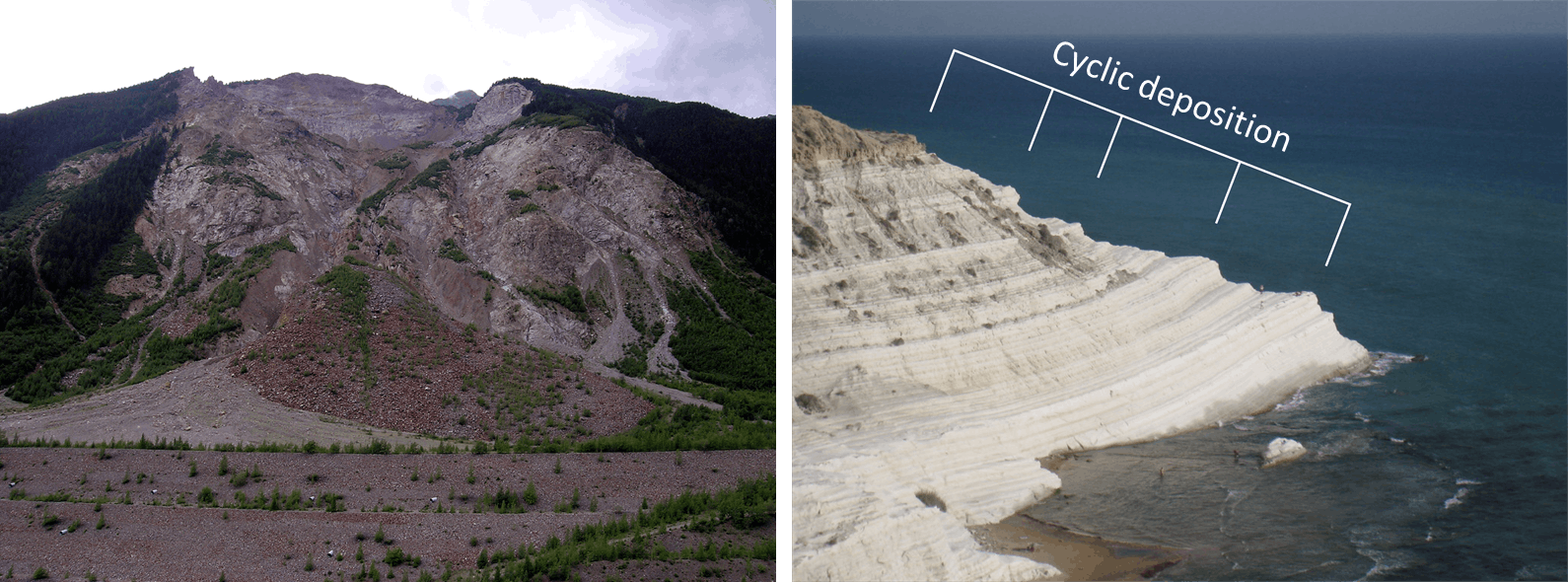
Scala dei Turchi in Agrigento consists of calcareous strata, composed of planktonic organisms, that are cyclically alternated with clayey layers of fluvial origin. On the right, the 1987 catastrophic landslide in Val Pola testifies to the deposition of 40 million cubic meters of rock in a single event. Illustration by G.Pastore
The concept of time discontinuity is exemplified by the landscape of the Jbel Tachtafacht, a hill in the Moroccan Anti-Atlas. The lower portion of the hill consists of tilted Paleozoic (ca 450 Ma) strata deposited for about 10 million years long, whereas the dark deposits of the summit of the hill are volcanic rocks dated 5 Ma. The near-horizontal surface that separates the two portions of the hill represents an extremely long time interval that is not materialized by rocks. How different would our reconstruction of the Earth history if we could know all the rocks that were formed but subsequently eroded away from the geological record?
How does time flow for the geologist?
It may appear flowing at different speeds in the geological record, because rocks are not all formed in the same way. In fact, if we consider a sedimentary rock composed of mineral grains, this may either represent the constant deposition of small shells or grains of sand on the seafloor, which accumulate over millions of years like the strata of the lower portion of the Jbel Tachtafacht, or it could represent an instantaneous event such as a landslide or a volcanic eruption like the upper strata of the Jbel. The same thickness of rocks can thus represent a different "amount of time". So, we can understand how the unknown unknowns are not what is lacking in our knowledge or in our theories, but more often the inability to overcome human concepts such as thinking that rocks with the same thickness represent the same amount of time.
In summary, we have tried to explore the concepts of this 23rd Triennale International Exhibition through the speculation of what we do not know we do not know in geological science. This concept is declined, not as what is unknown, but as what is impossible to know, and which nevertheless remains crucial to describe our planet and its history. Geological Sciences are the human attempt to tell the story of our planet, and to address the questions we know we don't know by trying to “connect points of known time”. But how different would this story be if we could see all the rocks (in depth and time)? How many unknown unknowns remains to be discovered?
Credits
Activity carried out under the supervision of prof. Marco G. Malusà , Coordinator of the PhD Course in Chemical, Geological and Environmental Sciences of the University of Milano-Bicocca. The suggestions and discussions with PhD students Gloria Arienti, Nicola Bavaresco, Emanuele Bozzi, Andrea Galli, Sofia Locchi e Luca Mariani are greatly acknowledged.
Related events

Related articles

Milanese Universities and Mystery.
Pedagogical Ways of Relating to Unknown Unknowns
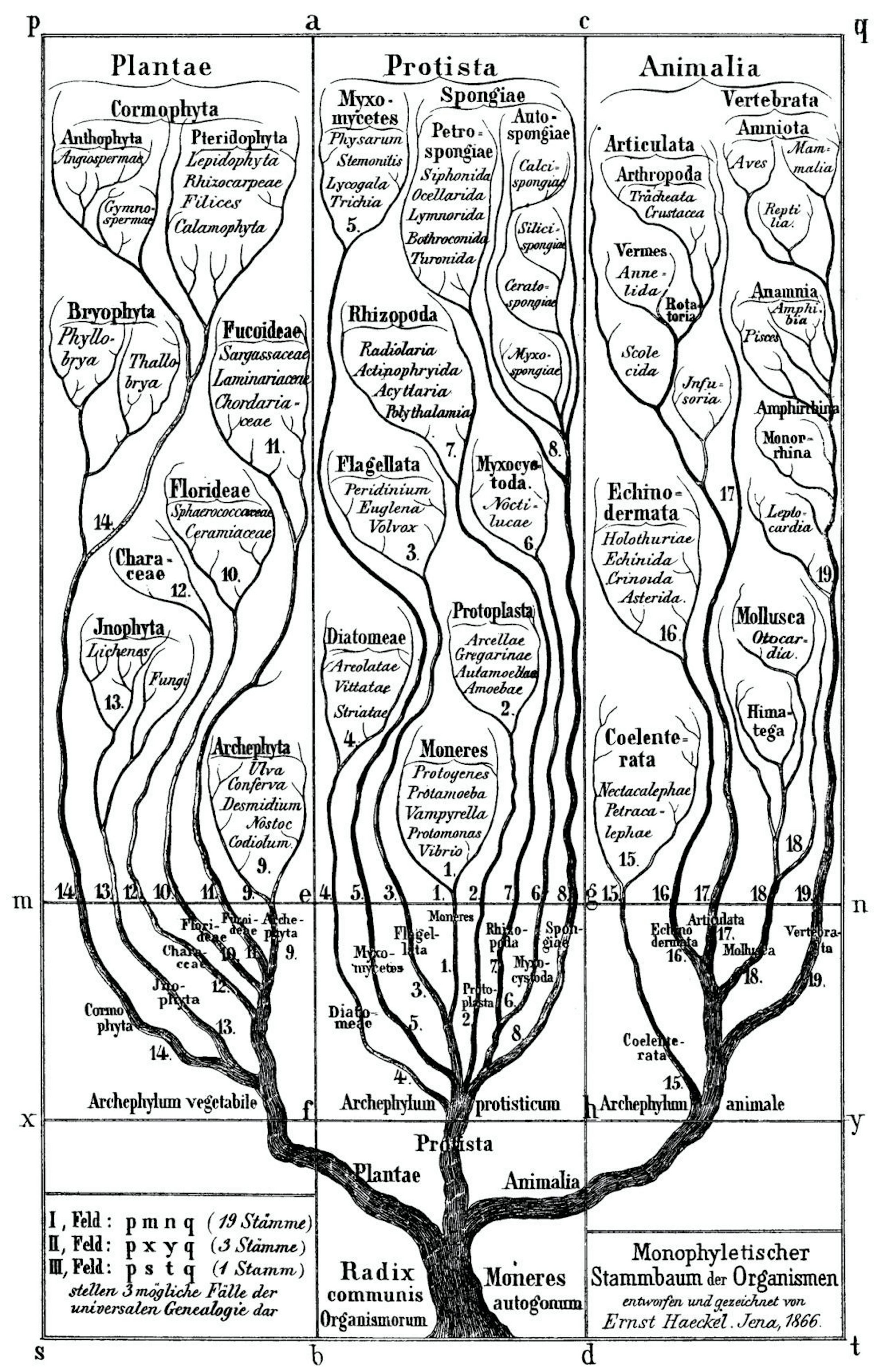
Milanese Universities and Mystery.
Biodiversity We Could Never Know
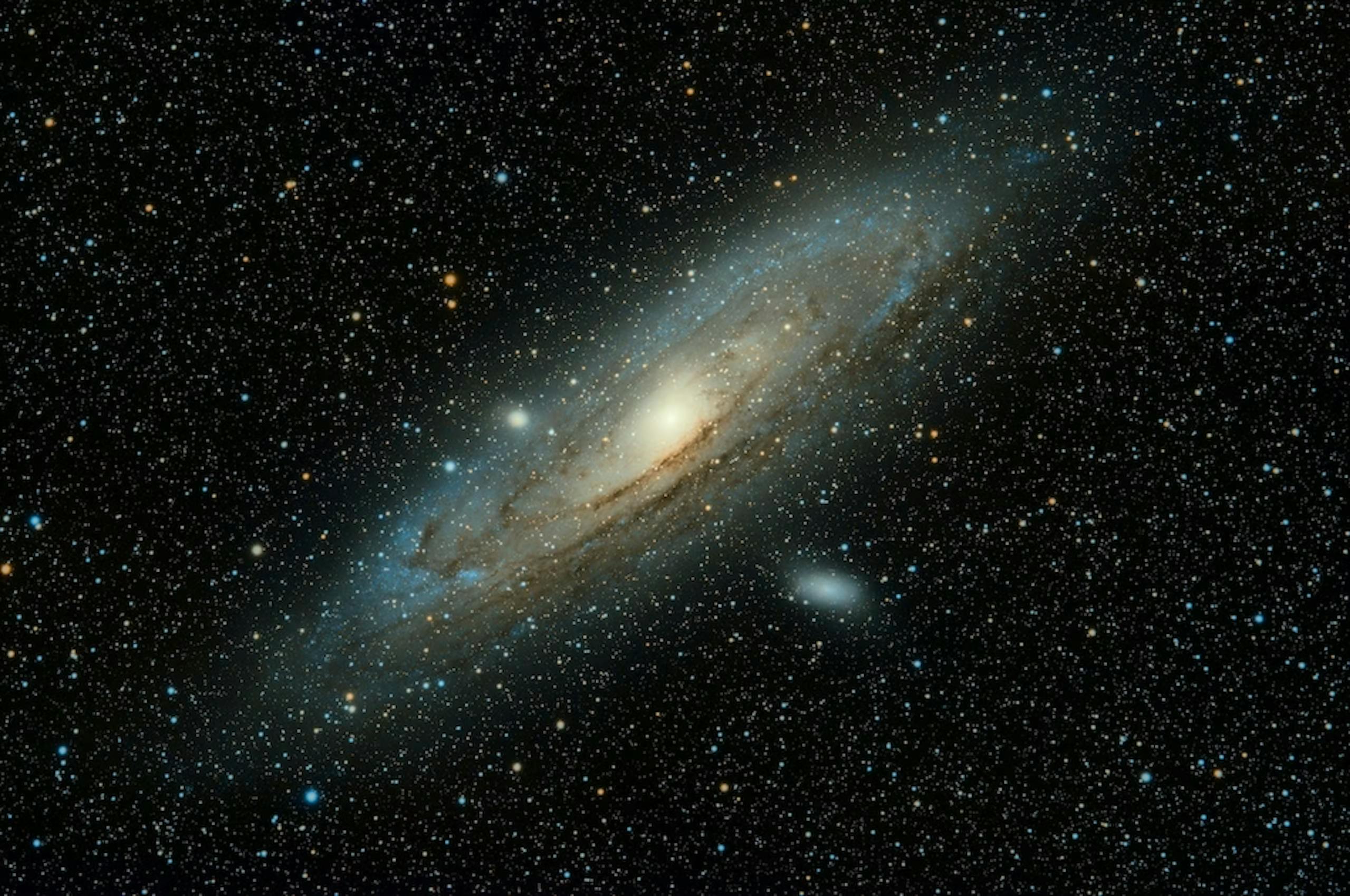
Milanese Universities and Mystery: Interview with Pupak Tahereh Bashirrad
